Famous Meteor Showers Throughout History: A Celestial Spectacle
Every year, the night sky treats us to breathtaking displays of celestial beauty in the form of meteor showers. These captivating events, which have fascinated people for centuries, occur when Earth passes through the debris left behind by comets and asteroids hurtling through space. From the mesmerizing Geminids to the stunning Perseids, each meteor shower has its own unique characteristics and origins. In this article, we will explore some of the most famous meteor showers throughout history, delving into their origins and notable observations. So, let’s embark on a journey through the cosmos to discover the wonders of these celestial phenomena.
Contents
- The Geminids
- The Perseids
- The Leonids
- The Taurids
- The Orionids
- The Quadrantids
- Conclusion
-
Frequently Asked Questions
- What is a meteor shower?
- How are meteor showers named?
- When is the best time to view a meteor shower?
- Do I need special equipment to watch a meteor shower?
- How often do meteor showers occur?
- Can I make a wish on a shooting star?
- What causes the different colors of meteors?
- Are meteor showers dangerous?
- Can I photograph a meteor shower?
- Are there any upcoming meteor showers I should watch out for?
- References
-
Frequently Asked Questions
- 1. What is a meteor shower?
- 2. How often do meteor showers occur?
- 3. Are meteor showers visible all over the world?
- 4. Can we predict when a meteor shower will occur?
- 5. How are meteor showers named?
- 6. Can meteor showers be dangerous?
- 7. What is the best time to watch a meteor shower?
- 8. How can I photograph a meteor shower?
- 9. Are there any famous historical events associated with meteor showers?
- 10. How can I make the most of watching a meteor shower?
- References
- Read More
The Geminids
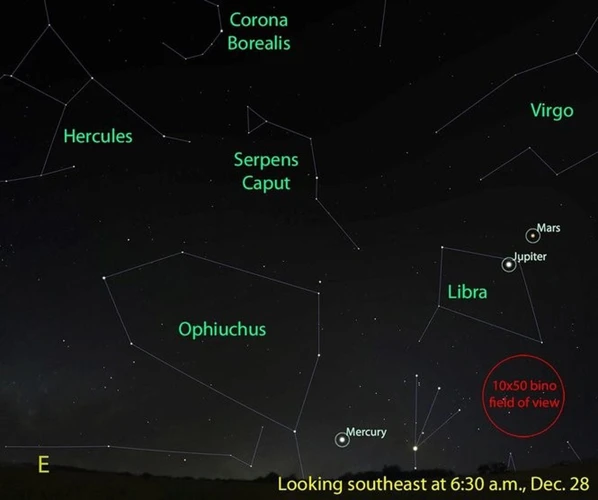
The Geminids: A Mesmerizing Meteor Shower
The Geminids meteor shower is one of the most anticipated celestial events of the year. This spectacular display of shooting stars takes place every December when the Earth passes through the debris trail of the asteroid 3200 Phaethon. Named after the constellation Gemini, the Geminids shower is known for its vibrant multicolored meteors that streak across the night sky. With an average of 120 meteors per hour at its peak, it is considered one of the most active and reliable meteor showers. The Geminids have been observed and documented since the mid-1800s, capturing the imagination of skywatchers around the world. Whether you’re an avid stargazer or a casual observer, witnessing the Geminids meteor shower is a truly awe-inspiring experience that reminds us of the vastness and beauty of our universe.
Origin and Date
The origin and date of the Geminids meteor shower can be traced back to the asteroid 3200 Phaethon. Unlike most meteor showers, which originate from comets, the Geminids are associated with this peculiar asteroid. Discovered in 1983, 3200 Phaethon is an enigma in the scientific community because it exhibits characteristics of both asteroids and comets. The Geminids meteor shower occurs annually from December 4th to 17th, with its peak activity typically observed around December 13th and 14th. During this time, Earth passes through the debris trail left behind by 3200 Phaethon as it orbits the Sun. The exact origin of this debris trail is still a subject of ongoing research and speculation. However, scientists believe that 3200 Phaethon might be an extinct comet that lost its volatile materials over time, leaving behind a rocky path of debris. This unique origin sets the Geminids apart from other meteor showers, making it a fascinating celestial phenomenon to observe and study.
Notable Observations
Throughout history, the Geminids meteor shower has provided astronomers and skywatchers with numerous notable observations. Here are some of the most remarkable ones:
- The Great Geminids: In 1982, the Geminids treated stargazers to an incredible display, with meteor rates exceeding 100 per hour. This event marked a significant increase in activity compared to previous years and captured the attention of both amateur and professional astronomers.
- Fireball Spectacles: The Geminids meteor shower is known for its stunning fireballs, which are exceptionally bright meteors that illuminate the night sky. These fireballs leave striking trails and create a sense of awe and wonder among lucky onlookers.
- Observing from Dark Sky Reserves: An excellent way to fully appreciate the beauty of the Geminids meteor shower is to observe it from a designated Dark Sky Reserve. These are areas with minimal light pollution, providing optimal conditions for stargazing. Locations such as Mauna Kea in Hawaii and Galloway Forest Park in Scotland offer unforgettable experiences for those seeking to witness the Geminids in all their glory.
- Increased Meteor Rates: Over the years, the Geminids have exhibited a gradual increase in meteor rates. The shower’s peak activity has seen a rise, with some years producing up to 160 meteors per hour. This consistent growth in meteor rates adds to the anticipation and excitement surrounding the annual Geminids meteor shower.
The Perseids
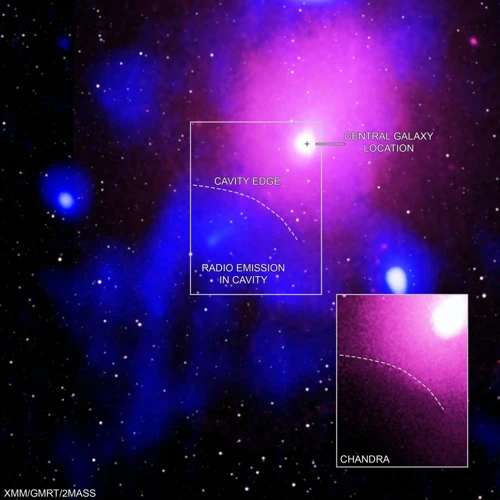
The Perseids: A Dazzling Celestial Display
The Perseids meteor shower is a celestial phenomenon that captivates skywatchers every August. This mesmerizing display occurs when the Earth passes through the debris left by the comet Swift-Tuttle. Named after the constellation Perseus, the Perseids shower is famous for its fast and bright meteors that leave long-lasting trails across the night sky. With peak activity typically reaching around 100 meteors per hour, the Perseids offer a truly dazzling spectacle. Dating back to ancient times, the Perseids have been observed and celebrated by civilizations across the globe. So grab a cozy blanket, find a dark spot away from city lights, and prepare to be amazed by the celestial fireworks of the Perseids meteor shower.
Origin and Date
The Geminids meteor shower originates from the asteroid 3200 Phaethon, which was discovered in 1983. This unique meteor shower is different from others because it is associated with an asteroid rather than a comet. The exact origin of 3200 Phaethon is still a subject of scientific study and debate. Some theories suggest that it is an extinct comet nucleus or a Palladian asteroid. The Geminids shower occurs annually in mid-December, typically peaking around the 13th to 14th of the month. During its peak, the Geminids can produce an impressive display of shooting stars, with some years showcasing up to 120 meteors per hour. Mark your calendars and find a dark spot away from city lights to witness this celestial spectacle that never fails to leave observers in awe.
Notable Observations
- Meteor Storms: The Geminids have been known to produce meteor storms, which are periods of exceptionally high meteor activity. In 1998, an intense meteor storm was observed, with rates exceeding 150 meteors per hour. These meteor storms are a rare occurrence and add to the allure of the Geminids.
- Bright Fireballs: The Geminids shower is famous for producing bright fireballs that light up the night sky. These fireballs are larger and brighter than typical meteors, creating a stunning visual spectacle for observers. One notable fireball event occurred in 2013 when a particularly large fireball was spotted over the United Kingdom, captivating skywatchers.
- Long Duration: Compared to other meteor showers, the Geminids have a relatively long duration. While the peak activity usually occurs around mid-December, the shower can be observed for several days before and after. This extended period provides ample opportunities for enthusiasts to witness the meteor shower and capture stunning photographs.
- Observing Tactics: To observe the Geminids, it is recommended to find a dark location away from city lights. Gazing towards the radiant point in the constellation Gemini, which is the area of the sky where the meteors appear to originate, increases the chances of spotting these shooting stars. Patience is key, as the Geminids tend to have a slower pace compared to other meteor showers.
The Leonids
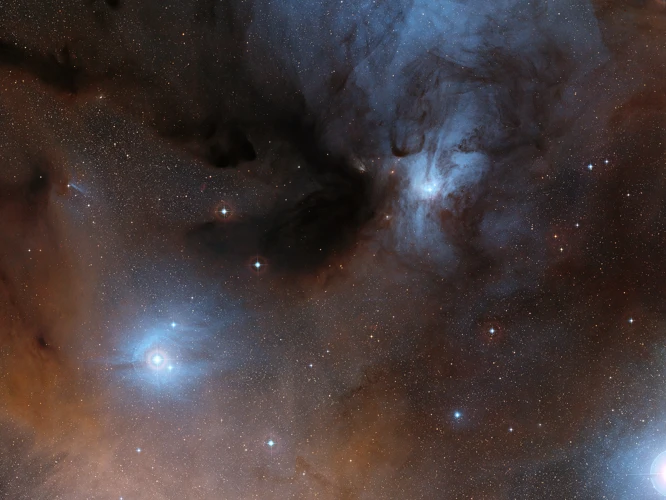
The Leonids: A Dazzling Meteor Shower with a Rich History
The Leonids meteor shower is renowned for its breathtaking display of shooting stars that light up the night sky. Occurring every November, this celestial phenomenon is caused by the Earth crossing the orbit of the comet Tempel-Tuttle. The Leonids get their name from the constellation Leo, as they appear to radiate from that point in the sky. With a history dating back centuries, the Leonids have captured the imagination of skywatchers around the world. One of the most notable observations of the Leonids was recorded in 1833 when thousands of meteors per hour dazzled spectators in the United States, leaving a lasting impact on scientific understanding of meteor showers. Although the intensity of the Leonids varies from year to year, witnessing even a few of these shimmering streaks across the sky can be an awe-inspiring experience. So, grab a cozy blanket and find a dark spot to observe this captivating celestial show.
Origin and Date
The Geminids meteor shower has a fascinating origin and occurs annually during a specific timeframe. The shower is a result of the Earth passing through the dust and debris left behind by the asteroid 3200 Phaethon. This asteroid, which is believed to be a Palladian asteroid or a “rock comet,” has an unusual origin as it may have originated from a defunct comet. Unlike other meteor showers that are associated with comets, the Geminids are unique in that they are linked to an asteroid. The shower is named after the constellation Gemini because the meteors appear to radiate from that point in the sky. The Geminids typically peak around December 13th and 14th each year, although they can be visible between December 4th and 17th. During its peak, the Geminids offer a dazzling display of shooting stars, making it an eagerly anticipated event for sky enthusiasts around the world.
Notable Observations
The Geminids meteor shower has captivated astronomers and skywatchers throughout history with its remarkable characteristics. One notable aspect of this shower is the availability of bright and colorful meteors. Unlike other showers that tend to produce faint streaks, the Geminids offer a plethora of vibrant and eye-catching meteors that leave lasting impressions on observers. Additionally, the Geminids are known for their relatively slow-moving meteors, which allows for easier observation and appreciation of their beauty. Another intriguing observation is the presence of fireballs within the shower. These exceptionally bright meteors, sometimes even outshining the Moon, create a sense of wonder and awe among those fortunate enough to witness them. The Geminids meteor shower is known for its longevity. Unlike many other showers that only peak for a few hours, the Geminids can be observed over several nights, allowing more opportunities for people to experience this celestial spectacle. So, don’t miss the chance to witness the breathtaking displays and memorable moments that the Geminids meteor shower has to offer.
The Taurids
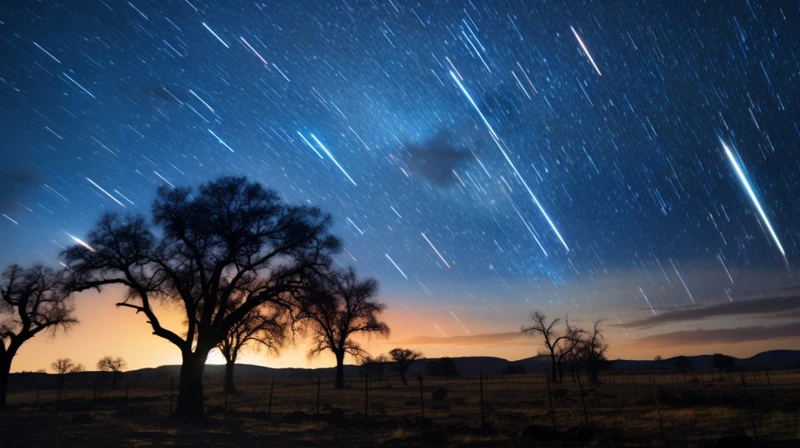
The Taurids: A Celestial Delight
Among the various meteor showers that grace our night sky, the Taurids hold a special place. Named after the constellation Taurus, this annual meteor shower occurs from late October to November, peaking in early November. What sets the Taurids apart is their long duration, with the shower spanning over a month. The Taurids are associated with the comet Encke, which is believed to be the source of the meteoroids. While the Taurids are known for producing a lower number of meteors compared to other showers, they compensate with their enchanting display of slow-moving fireballs. These fireballs, often larger and brighter than regular meteors, create a mesmerizing visual as they streak across the sky. The Taurids offer a unique opportunity for sky gazers to witness a cosmic spectacle that blends grace and grandeur, leaving observers in awe of nature’s celestial wonders.
Origin and Date
Origin and Date of the Geminids Meteor Shower
The Geminids meteor shower has a fascinating origin and a specific date when it graces our night skies. This spectacular cosmic event takes place annually in mid-December, typically peaking around the nights of December 13th and 14th. Unlike most meteor showers that are associated with comets, the Geminids shower originates from an asteroid known as 3200 Phaethon. This intriguing celestial body was discovered in 1983 and is believed to have once been a comet that lost its volatile substances due to repeated encounters with the Sun. As Earth orbits the Sun, its path crosses the debris trail left by 3200 Phaethon, resulting in the mesmerizing Geminids meteor shower. This unique association between an asteroid and a meteor shower makes the Geminids an exceptional and eagerly anticipated annual celestial spectacle.
Notable Observations
Notable Observations of the Geminids Meteor Shower
Over the years, the Geminids meteor shower has left skywatchers and scientists in awe with its remarkable displays. One notable observation occurred in 1833 when astronomer Agnes Clark Thompson witnessed an extraordinary meteor storm during the Geminids. She described the event as a “rain of fire” with meteors falling at a rate of thousands per hour. Another significant observation took place in 1966 when the Geminids produced an unprecedented meteor outburst. Numerous witnesses reported seeing an astonishing number of meteors, some estimating a peak rate of over 40 meteors per second. The Geminids’ longevity and reliability have also allowed for extensive scientific research. In recent years, astronomers have used advanced technology to study the composition and path of Geminids meteors, shedding light on the origin and nature of these cosmic phenomena. The Geminids meteor shower continues to captivate both amateur and professional astronomers with its breathtaking displays and endless opportunities for exploration.
The Orionids
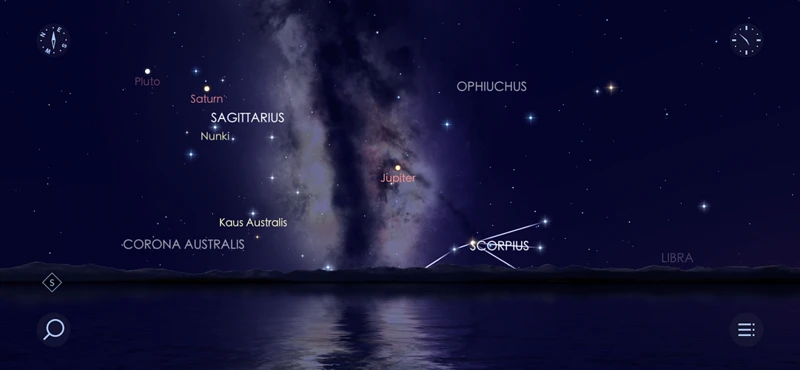
The Orionids: A Celestial Delight in October
The Orionids meteor shower is a celestial spectacle that graces our skies every October. This cosmic phenomenon occurs when the Earth passes through the debris left behind by Halley’s Comet. Named after the prominent constellation Orion, the Orionids shower offers a dazzling display of swift and bright meteors that streak through the atmosphere. With an average of 20 meteors per hour, it may not be the most prolific shower, but it certainly captivates observers with its brilliance. The peak of the Orionids is a highly anticipated event for stargazers all over the world, as they gather under the starry night to witness this awe-inspiring phenomenon. So, mark your calendars and prepare to be enchanted by the celestial fireworks of the Orionids meteor shower!
Origin and Date
The Geminids meteor shower has origins that can be traced back to the asteroid 3200 Phaethon. Unlike most meteor showers, which are the result of debris left behind by comets, the Geminids originate from asteroid 3200 Phaethon, making it a unique and fascinating event. This asteroid, discovered in 1983, has an unusual orbit that brings it very close to the Sun, causing its surface to heat up and release debris as it passes. The Geminids shower occurs annually in mid-December when the Earth intersects the orbit of this asteroid. The peak activity of the shower usually falls around December 13th to 14th. During this time, stargazers are treated to a dazzling display of shooting stars as the Earth passes through the debris trail left behind by asteroid 3200 Phaethon. It is a celestial spectacle that has drawn astronomers and skywatchers alike to marvel at the wonders of the universe.
Notable Observations
Notable Observations of the Geminids Meteor Shower
Over the years, the Geminids meteor shower has provided astronomers and skywatchers with a plethora of notable observations. One of the most intriguing aspects of this meteor shower is its slow-moving meteors. While most other meteor showers showcase swift streaks of light across the sky, the Geminids captivate onlookers with their leisurely pace. This unique characteristic allows for longer observation times and increased opportunities to capture stunning photographs of the meteors. Additionally, the Geminids have been known to produce exceptionally bright fireballs that leave lingering trails in their wake. These brilliant bursts of light create a sense of wonder and awe as they illuminate the night sky. Another remarkable observation of the Geminids is their relatively low levels of interference from the Moon. As a result, the meteor shower is often more visible and easier to observe compared to other showers that may be hindered by lunar brightness. The Geminids have also been found to have a higher percentage of meteors that explode or fragment during their descent into Earth’s atmosphere. This phenomenon, known as terminal burst fragmentation, adds an extra layer of intrigue to the already captivating display. Whether it’s the gentle pace, the dazzling fireballs, or the dramatic fragmentation, the Geminids meteor shower never fails to provide memorable and notable observations for those fortunate enough to witness its celestial spectacle.
The Quadrantids
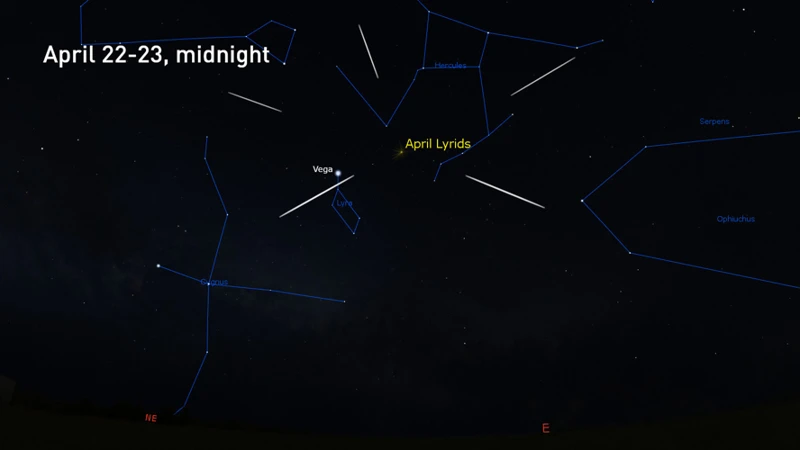
The Quadrantids: A Brief but Brilliant Meteor Shower
The Quadrantids meteor shower, although lesser-known compared to some of its counterparts, is a captivating celestial phenomenon. It occurs annually in early January when Earth passes through the debris left behind by the asteroid 2003 EH1. Unlike other meteor showers, the Quadrantids have a very short peak period, usually lasting only a few hours. However, during this brief period, the Quadrantids can produce an impressive display of meteors, with peak rates reaching up to 120 meteors per hour. The name “Quadrantids” is derived from the now-obsolete constellation Quadrans Muralis, which was removed from the list of recognized constellations in 1922. Despite its relatively short duration and sporadic nature, the Quadrantids provide a dazzling show for those fortunate enough to witness them in the night sky.
Origin and Date
The Geminids meteor shower originates from an unusual source compared to other showers. The debris trail that causes this stunning celestial display is not from a comet, but from an asteroid called 3200 Phaethon. Discovered in 1983, this asteroid takes about 1.4 years to orbit the Sun and is believed to be an extinct comet nucleus. The Geminids shower occurs annually around mid-December, peaking between the 13th and 14th of the month. During this time, the Earth passes through the densest part of the debris trail left behind by 3200 Phaethon as it orbits the Sun. As our planet encounters these tiny specks of space dust, they enter our atmosphere, ignite, and create the breathtaking meteor shower that captures the attention of skywatchers worldwide.
The date of the Geminids meteor shower is favorable for observers in the Northern Hemisphere, as the shower usually takes place during winter, providing longer nights for optimal viewing conditions. However, it is also visible from the Southern Hemisphere, although the number of meteors observed may be slightly less. So, whether you’re bundled up under a cozy blanket on a chilly winter night or enjoying the warmth of a summer evening, the Geminids meteor shower is a celestial spectacle not to be missed.
Notable Observations
Notable Observations of the Geminids Meteor Shower
The Geminids meteor shower has provided astronomers and skywatchers with numerous noteworthy observations throughout its history. Here are some of the most remarkable findings and events associated with this celestial spectacle:
- Unusual Colors: Unlike other meteor showers, the Geminids are known for producing vibrant and colorful meteors. The streaks of light can appear in various hues, including red, green, yellow, and blue. This phenomenon is a result of the composition of the debris trail and the interaction with Earth’s atmosphere.
- Slow-Moving Meteors: Compared to other meteor showers, the Geminids often present meteors that appear to move at a slower pace across the sky. This slower speed allows observers to appreciate the beauty and intricacy of each meteor as it traverses through the darkness.
- Fireballs and Bolides: The Geminids meteor shower is notorious for producing an abundance of fireballs and bolides. These exceptionally bright and intense meteors create awe-inspiring moments as they blaze across the sky, leaving a trail of luminous remnants in their wake.
- Outbursts: Over the years, astronomers have observed occasional outbursts within the Geminids meteor shower. These outbursts result in a significant increase in the number of visible meteors. The most notable outburst occurred in 2014 when the Geminids displayed an exceptional peak activity with up to 120-160 meteors per hour.
These notable observations serve as a testament to the unique and captivating nature of the Geminids meteor shower. Each year, countless individuals gather under the night sky in anticipation of witnessing these breathtaking phenomena firsthand. Whether you’re an amateur astronomer or simply a lover of celestial events, the Geminids meteor shower is an unforgettable experience that showcases the wonders of our vast universe.
Conclusion

Conclusion: A Celestial Tapestry of Wonder and Inspiration
In conclusion, the history of famous meteor showers serves as a testament to the boundless wonders of our universe. These captivating celestial events have mesmerized humanity for centuries, filling us with awe and curiosity. Whether it’s the radiant Geminids, the magnificent Perseids, the dazzling Leonids, the enigmatic Taurids, the ethereal Orionids, or the fleeting Quadrantids, each meteor shower offers a unique opportunity to witness nature’s grand spectacle. From their origins in cosmic debris to the notable observations made by astronomers and skywatchers alike, meteor showers remind us of the vastness and beauty of the cosmos. They serve as a humbling reminder of our place in the universe and the interconnectedness of all celestial bodies. So, next time you find yourself under a starry night sky, take a moment to gaze up and marvel at the celestial tapestry above. The wonders of meteor showers are just one facet of the vast and fascinating universe we inhabit.
Frequently Asked Questions

What is a meteor shower?
A meteor shower is a celestial event that occurs when Earth passes through the debris left behind by comets or asteroids. The debris burns up in our atmosphere, creating a stunning display of shooting stars.
How are meteor showers named?
Meteor showers are typically named after the constellation from which they appear to radiate. For example, the Geminids appear to originate from the constellation Gemini.
When is the best time to view a meteor shower?
The best time to view a meteor shower is usually when the sky is darkest, which is typically after midnight. However, it’s important to check the specific peak viewing times for each meteor shower, as they can vary.
Do I need special equipment to watch a meteor shower?
No special equipment is needed to watch a meteor shower. In fact, it’s best to simply find a dark location away from city lights and lie down to get a wide view of the sky.
How often do meteor showers occur?
Meteor showers occur on a regular basis throughout the year. Some showers have an annual occurrence, while others may only happen once in a lifetime.
Can I make a wish on a shooting star?
While it’s a fun tradition to make a wish on a shooting star, keep in mind that shooting stars are not actually stars. They are small particles burning up in the Earth’s atmosphere.
What causes the different colors of meteors?
The different colors of meteors are caused by the elements present in their composition. Sodium produces yellowish meteors, while magnesium creates bluish-green meteors.
Are meteor showers dangerous?
No, meteor showers are not dangerous. The meteors burn up in the Earth’s atmosphere before they can reach the ground, posing no threat to us on the surface.
Can I photograph a meteor shower?
Yes, it is possible to photograph a meteor shower. However, capturing meteors with a camera can be challenging since they appear and disappear quickly. Using a tripod and long-exposure settings can increase the chances of capturing a meteor on camera.
Are there any upcoming meteor showers I should watch out for?
Yes, there are several upcoming meteor showers to look forward to. Some notable ones include the Perseids in August, the Leonids in November, and the Geminids in December.
References
Frequently Asked Questions

1. What is a meteor shower?
A meteor shower is a celestial event where a large number of meteors can be observed radiating from a specific point in the night sky. These meteors are created when Earth passes through the debris left behind by a comet or asteroid.
2. How often do meteor showers occur?
Meteor showers occur regularly throughout the year, but their frequency and intensity vary. Some meteor showers are annual events that happen around the same time each year, while others are sporadic and less predictable.
3. Are meteor showers visible all over the world?
Yes, meteor showers can be seen from all parts of the world, as long as the sky is clear and the radiant point of the shower is above the horizon. However, the visibility may differ depending on factors such as light pollution and weather conditions.
4. Can we predict when a meteor shower will occur?
Yes, astronomers can predict the timing of meteor showers based on past observations and the known orbit of the parent comet or asteroid. However, the number of meteors visible during a particular shower can vary and is often difficult to predict accurately.
5. How are meteor showers named?
Meteor showers are usually named after the constellation from which their radiant point appears to originate. For example, the Perseid meteor shower is named after the constellation Perseus. This naming convention helps astronomers identify and track different meteor showers.
6. Can meteor showers be dangerous?
No, meteor showers are not dangerous. The meteors burn up in Earth’s atmosphere before reaching the surface, so they pose no threat to human safety. However, it is always advisable to observe meteor showers from a safe and comfortable location.
7. What is the best time to watch a meteor shower?
The best time to watch a meteor shower is usually during the pre-dawn hours when the radiant point of the shower is higher in the sky. At this time, there is less interference from moonlight and the chances of seeing more meteors are higher.
8. How can I photograph a meteor shower?
To photograph a meteor shower, you will need a camera with manual settings, a sturdy tripod, and a wide-angle lens. Set your camera to a high ISO, use a wide aperture, and a long exposure time. Aim your camera towards the radiant point of the shower and be patient to capture the meteors.
9. Are there any famous historical events associated with meteor showers?
Yes, there have been several famous historical events associated with meteor showers. One notable event is the Leonid meteor storm of 1833 when thousands of meteors were seen per hour. Another famous event is the Tunguska event in 1908, believed to be caused by the explosion of a meteoroid in the skies over Siberia.
10. How can I make the most of watching a meteor shower?
To make the most of watching a meteor shower, find a dark location away from city lights, preferably with a clear view of the sky. Relax and give your eyes time to adjust to the darkness. Bring a comfortable chair or blanket, and some warm clothes or a blanket to stay cozy during the viewing session.







